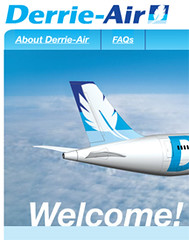”In my opinion, the way the public relations industry responds to the problem of PR spam over the course of the next six to 12 months could make or break our profession for the next decade. Why are our professional organizations not prioritizing this?” — Jason Falls
I love this punchy prediction tucked inside the post on Social Media Explorer because it challenges an industry that never considers their own work spam. It’s always those other guys and gals who are bringing the industry down.
Sure, not everyone in public relations is a spammer, but it often seems that more of them play the numbers game than anyone will ever admit. At minimum, more play the number than those who will spend several hours searching for news inside their clients’ companies.
Falls says Jeremy Pepper is right. The industry needs education, but it’s not just up to professors to teach it. (Considering how many public relations professionals studied this profession in school, I tend to agree. Not to mention, for every instructor who advises against spamming, there is one or more who liken pitch calls and press releases to the return on a slot machine.)
Falls says a lot of it has to do with developing relationships over lists. In truth, he is part right. But what the novice public relations professional never seems to be taught is how to develop those relationships in the first place. So rather than recap his well-thought post in entirety, I’ll cut to the chase.
It’s easy to develop relationships. While I am oversimplifying, there are three ways to establish connections with bloggers and journalists.
1. Go to work for a company, agency, or organization that the bloggers and journalists are already interested in. It seems tongue in cheek, but it’s true. If you work for Apple or Microsoft or the district attorney’s office, they’ll contact you fifteen minutes after you introduce yourself as the new go-to person.
2. Become engaged in events, activities, networks, and organizations that bloggers and journalists care about, er, assuming you have a common interest. Much like business, many relationships develop outside the bubble.
3. Skip the blast emailing people about the company’s next balloon popping and find some real news. Once you find it, invest some time into writing a great release and sending it to only those bloggers and journalists who might be interested. When the blogger or journalist follows up, you then have an opportunity to deepen the relationship based on your ability to help them.
The third point is where people get mixed up because many of them struggle with determining what is news and what is not. Personally, I think it takes some time to develop an appreciation for what might make the news. I tossed up ten items that help determine news last year.
But sometimes the answer is even simpler. Start by asking yourself if you would want to write about the topic you are sending to the blogger or journalist. Based on the effort put into some releases, I would guess that many public relations professionals would say no. So if that is your answer, there you go!

I love this punchy prediction tucked inside the post on Social Media Explorer because it challenges an industry that never considers their own work spam. It’s always those other guys and gals who are bringing the industry down.
Sure, not everyone in public relations is a spammer, but it often seems that more of them play the numbers game than anyone will ever admit. At minimum, more play the number than those who will spend several hours searching for news inside their clients’ companies.
Falls says Jeremy Pepper is right. The industry needs education, but it’s not just up to professors to teach it. (Considering how many public relations professionals studied this profession in school, I tend to agree. Not to mention, for every instructor who advises against spamming, there is one or more who liken pitch calls and press releases to the return on a slot machine.)
Falls says a lot of it has to do with developing relationships over lists. In truth, he is part right. But what the novice public relations professional never seems to be taught is how to develop those relationships in the first place. So rather than recap his well-thought post in entirety, I’ll cut to the chase.
It’s easy to develop relationships. While I am oversimplifying, there are three ways to establish connections with bloggers and journalists.
1. Go to work for a company, agency, or organization that the bloggers and journalists are already interested in. It seems tongue in cheek, but it’s true. If you work for Apple or Microsoft or the district attorney’s office, they’ll contact you fifteen minutes after you introduce yourself as the new go-to person.
2. Become engaged in events, activities, networks, and organizations that bloggers and journalists care about, er, assuming you have a common interest. Much like business, many relationships develop outside the bubble.
3. Skip the blast emailing people about the company’s next balloon popping and find some real news. Once you find it, invest some time into writing a great release and sending it to only those bloggers and journalists who might be interested. When the blogger or journalist follows up, you then have an opportunity to deepen the relationship based on your ability to help them.
The third point is where people get mixed up because many of them struggle with determining what is news and what is not. Personally, I think it takes some time to develop an appreciation for what might make the news. I tossed up ten items that help determine news last year.
But sometimes the answer is even simpler. Start by asking yourself if you would want to write about the topic you are sending to the blogger or journalist. Based on the effort put into some releases, I would guess that many public relations professionals would say no. So if that is your answer, there you go!





















